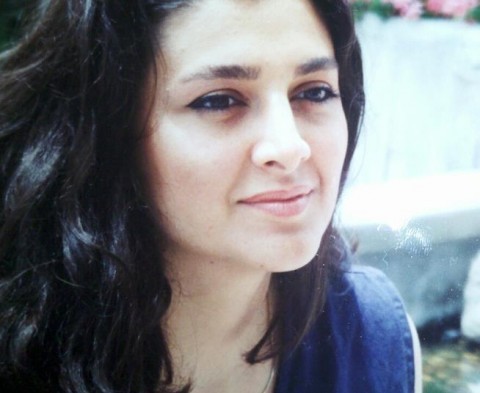
Recently, my grandmother and I were having a conversation about LGBTQ rights. As a Christian reverend, in her mind, it was always someone’s choice to be gay, lesbian, bisexual, or transgender. She always felt that if that someone has the will to choose to identify as any of those categories, then they can find the will to “turn their life around” and “be delivered.”
Of course, my emotions met her views with anger and frustration about the fact that after living 72 years, she still couldn’t see that this group of people is seeing much of the same fate she saw living in 1950s Tennessee as young black girl, which was enough to get you lynched.
But then, I had no choice but to tune back into the conversation when she admitted that though LGBTQ people do face countless discrimination, it makes her angry to hear the LGBTQ movement compared to the Civil Rights Movement.
“It’s different,” was all she said when I asked her why. She encouraged me to think about how a white person who is gay, bisexual, or transgender has the option of not letting anyone know about their sexual orientation or gender identity while people of color don’t exactly have the option of keeping their color a secret. I couldn’t argue with that.
It made me think further about how difficult life must be for people who identify as minorities but also as members of the LGBTQ community. The question then becomes, “What happens when you go to communities full of mostly white LGBTQ people as an LGBTQ person of color and are silently or violently singled out for being a minority?”
I had never thought of racism within the LGBTQ community as a “thing” until a close friend, who is lesbian, told me that there’s a big problem with racism between LGBTQ people on prominent online dating sites.
After doing some research, I found an article written by Ricky Mula and Holley Law Fellow about some of the outright racist comments that are found on sites such as Grindr, OkCupid, etc. Apparently, it’s so bad that many men of color have been forced to hide their racial identity because of the lack of attention they receive and hurtful comments. Their research found that, according to a blog ran by OkCupid, white gay men are more likely to respond to other white men than men of color. The data said that responses to other white men averaged 44 percent, while responses to men of color averaged 37.3 percent.
Manisha Krishnan wrote in an article for Vice about how minority users are forewarned not to message other users who post in their profiles, “no blacks”, “no Asians,” and sometimes refer to Asian or Asian-American people as “chopsticks,” or Indian and Indian-American people as “curry.”
Even LGBTQ media has come under attack for its exclusion of people of color, most recently in the #GayMediaSoWhite movement. LGBTQ men of color and their allies called out on Twitter how they feel that even straight white men get on more LGBTQ magazine covers than anybody else.
Ernest Owens, a black gay columnist for the Huffington Post, wrote, “People of color are often the voyeurism that shapes white queer spaces—a feeling that has become more exploitative and problematic than embracing. The constant pandering of black LGBT men as drag-ballroom performers or hypersexual eye-candy takes flight in many gay social scenes. There is almost a subservient element to it that excludes any other black gay expression that isn’t catering to the white queer gaze.”
And if that’s not enough, some who don’t fit the narrative of what a minority LGBTQ person should look like are more susceptible to extreme violence. Lately, black transgender women have been reported the most vulnerable group. A 2015 article from The Guardian says that out of 13 reported murders of trans women that year, 11 victims were black Americans. The story framing the data was the 2015 murder of Shade Schuler, a black transgender woman whose decomposed body was found in Dallas. That same year, The Guardian published another article on Elisha Walker, a black transgender woman who was murdered and was missing for a year until her body turned up in Johnston County, North Carolina.
If the problem isn’t hurtful rejections, violent harassment or the erasure of life, it becomes careless fetishizing. Krishnan discusses one man’s experience of being told by other men on social media that they wanted his “brown uncut dick.” Mula and Fellow described a black man’s experience of being asked, “Do you want to make a white man your slave?”
As a black American woman, I know all too well of the colored rejections and the be-my-experiment advances. And I can recall plenty of instances where I was bluntly looked up and down when seen in predominantly white male LGBTQ spaces. On social media sites that are not geared toward any particular group of people, you also see racial exclusion and fetishism.
You could easily argue that people who post rude comments on dating sites just have a “preference,” and that it’s the same thing as preferring tall people or thin people. But even in those cases, some of us need to examine why our “preferences” evolve into strictly excluding entire groups of people. I could say that my “preference” is for light-complexioned men who are six feet tall or above, but it would become something else if I said men of my own complexion who aren’t soaring giants could absolutely never do for me what the former could.
If you’re someone who only gives your time and thought to light-skinned people or tall people or thin people, you have the right. But I suggest you take a few moments out of one day to think closely about why that is. Perhaps it’s because you dated someone (or maybe a few people) who didn’t fit into those categories and things didn’t go well. And if so, maybe people with similar physical features are being blamed for that. Or you’ve been socially hoodwinked into believing that your ideal type is the desired type everywhere.
Your life is your own, but a wise person would challenge themselves not to put limitations on finding a partner or meaningful friendships over small, unchangeable characteristics.
Elisheva Azarael is a Collegian columnist and can be reached at [email protected].
















Dr. Venckman • Sep 27, 2016 at 1:55 pm
Oh, the irony!